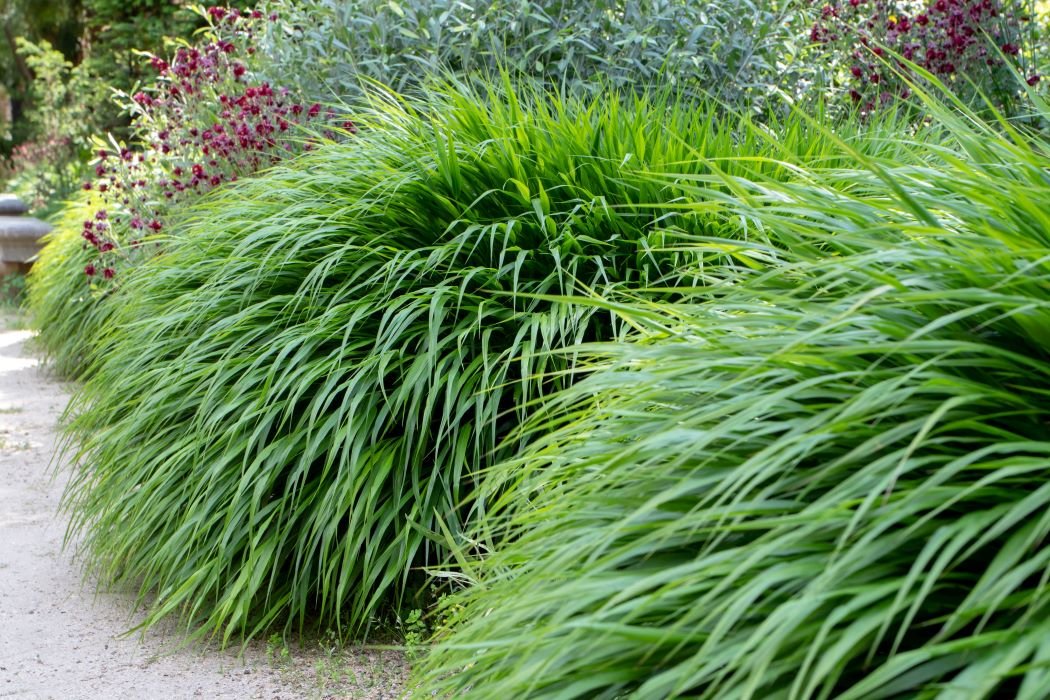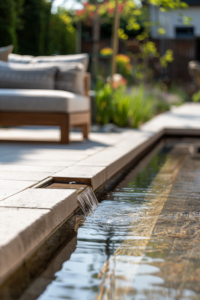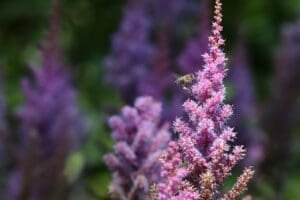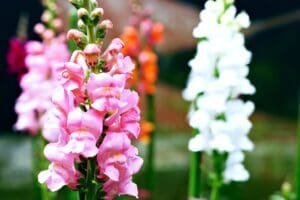Hakonechloa macra, commonly known as Japanese forest grass or Hakone grass, is a graceful ornamental grass admired for its cascading foliage and shade tolerance. This versatile plant has become increasingly popular in gardens thanks to its elegance and adaptability. With its cascading habit and distinctive striped leaves, Hakonechloa macra adds a refined touch to borders, containers, and shaded areas.
Hakonechloa Macra is highly valued in landscaping for its ability to bring a flowing, natural look to gardens. Its fine texture and swaying foliage creates a relaxed feel. This ornamental grass thrives in shady spots where many other plants fail to prosper. It tolerates a wide range of soil conditions, making it an excellent option for problem areas.
You might also like: Ornamental Grasses
Hakonechloa Macra: Characteristics and Uses
Hakonechloa macra possesses several noteworthy characteristics that make it a prime choice for many garden settings. Some of the most important features include:
- Cascading habit, with arching foliage that sways gracefully in the breeze
- Striking striped green and white or pink-tinged leaves
- Shade tolerance and ability to thrive in low light areas
- Adaptability to various soil types and moisture levels
- Spreads slowly to form an attractive mound or groundcover
This versatile grass fits beautifully into woodland gardens, shady borders, and areas beneath trees. The cascading foliage and sweeping texture makes a lovely contrast to broad-leaved perennials and bold foliage plants. Hakonechloa macra blends well in Asian-inspired gardens too.
For landscaping uses, Hakonechloa macra works excellently as:
- Groundcover or mass plantings to cover slopes and shaded areas
- Borders along walkways, fences, and tree lines
- Container plantings, in pots or planter boxes on patios and decks
- Accent or specimen plant to draw attention to a specific spot
- Near water features, where its graceful drape complements the water
The fine texture and striped leaves adds subtle colour and contrast. It brings a soft, free-flowing element that complements many garden styles.
Planting and Care Guide for Hakonechloa Macra
Proper planting and care helps ensure Hakonechloa macra thrives in your landscape. Follow these tips for success:
Site Selection
- Choose an area with partial to full shade, or dappled sunlight. Avoid hot afternoon sun.
- Provide shelter from strong winds which may damage the arching foliage
Soil Preparation
- Amend soil with compost or leaf mold to improve drainage
- Maintain evenly moist soil, not soggy or bone dry
- Ideal pH is neutral to slightly acidic
Planting
- Space plants 12-18 inches apart in staggered rows
- Dig holes the width of the root ball and 1.5 times the depth
- Set root ball slightly high, top of roots at soil level
- Backfill with native soil, tamp gently to remove air pockets
- Water thoroughly after planting
Growing Conditions
- Thrives in part sun to full shade
- Tolerates a range of soil types, from sand to clay
- Requires consistently moist soil, avoid extremes of drought or waterlogging
- Hardy to USDA zones 4-9
- Peak foliage colour in partial sun; more lime-green in deep shade
Care
- Water 1-2 inches per week, more in extreme heat, less if rainy
- Apply balanced fertilizer in spring and fall
- Cut back old foliage in late winter before new growth emerges
- Remove weeds and clear debris around plants
- Mulch annually with 2-3 inches of organic matter
- No major pest or disease problems
Propagating Hakonechloa Macra
Hakonechloa macra can be readily propagated by several methods. This allows you to expand your plantings for free.
Division
- Divide in early spring as new growth starts
- Use a shovel to slice through the clump, retaining 3-5 culms per division
- Replant divisions 15 inches apart
- Keep soil evenly moist while roots establish
Seed Sowing
- Sow seeds indoors in flats in late winter
- Barely cover seeds with soil, keep humid and 65-70F
- Transplant seedlings after 4-6 weeks
- Seedlings may take 2+ years to reach mature size
Division is the easiest method and preserves desired plant characteristics. Tissue cultured plants offer a fast option but lack the maturity of older plants. Seed propagation is possible but very slow to establish.
Troubleshooting Common Problems with Hakonechloa Macra
When provided with its favoured growing conditions, Hakonechloa macra is relatively trouble-free. However, suboptimal care may result in a few potential issues:
Browning Leaves
- Causes include drought stress, excessive sun, or overfertilization
- Improve soil moisture and light conditions
- Apply fertilizer judiciously in spring and fall
Stunted Growth
- Often due to excessive shade or root competition
- Increase sunlight where possible
- Clear away grass and weeds from base of plants
Pest Problems
- Main pests are spider mites, aphids, or scale
- Treat with horticultural oil or insecticidal soap sprays
- Improve plant vigour to resist pests
- Remove badly infested foliage
The best prevention is proper siting and care. Healthy, thriving plants have fewer issues. Monitor regularly for early signs of problems. Prompt action prevents major damage.
FAQs About Hakonechloa Macra
Q: What is the ideal light requirement for Hakonechloa macra?
A: Hakonechloa macra thrives in partial shade or dappled sunlight. It can tolerate full shade but may become weaker and less dense. A few hours of morning or late day sun is ideal.
Q: How often should I water Hakonechloa macra?
A: Water 1-2 inches per week during the growing season, adjusting for rainfall. Soil should remain evenly moist but not constantly saturated. Reduce watering in winter.
Q: What type of soil is best for growing Hakonechloa macra?
A: Hakonechloa is quite adaptable and tolerates most well-draining soils. Loamy soil enriched with compost is ideal. It also does well in sandy soils if kept moist.
Q: How do I propagate Hakonechloa macra by division?
A: In early spring, use a shovel to divide the plant, retaining clumps of 3-5 culms. Replant 15 inches apart and water well until established.
Q: What are some common pests and diseases that affect Hakonechloa macra?
A: Spider mites, aphids, and scale insects may sometimes be a problem. Good cultural practices help prevent infestations. Horticultural oils or insecticidal soaps can control outbreaks.
Final thoughts
With its graceful habit, ornamental appeal, and adaptability, Hakonechloa macra is a superb addition to landscapes. This Japanese forest grass thrives in shady sites but also tolerates sun if provided sufficient moisture. Once established, it requires little care beyond annual pruning, fertilization, and mulching. Its fine texture and cascading foliage creates beautiful effects in borders, beds, containers and naturalized areas. For an elegant, low-maintenance ornamental grass, look no further than the superb Hakonechloa macra. Incorporate a few plants into your garden design to enjoy their flowing beauty for years to come.






